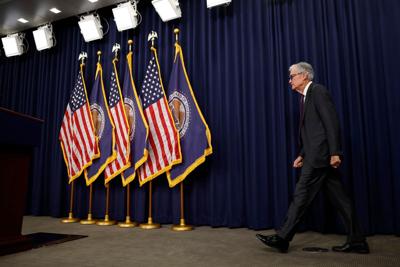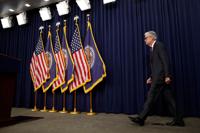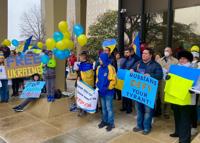Washington (CNN) — The Federal Reserve said Wednesday it will as the US economy begins to show the effects of President Donald Trump’s haphazard trade war.
The central bank kept its benchmark lending rate unchanged at a range of 4.25% to 4.5%, extending a holding pattern that began in January.
Officials have said it’s best to wait on the sidelines for data to show how the US economy is responding to Trump’s significant policy changes, though the Fed said in its latest policy statement that the “risks of higher unemployment and higher inflation have risen” — a toxic duo known as stagflation.
Trump’s whipsawing tariffs have already taken a toll on economic growth, which the Fed in its latest policy statement attributed to “swings in net exports.” The US economy , its first quarterly decline since 2022, as Americans rushed to beat Trump’s tariffs, which sent imports surging. A higher trade deficit, a result of imports exceeding exports, subtracts from GDP.
Still, the US economy hasn’t fallen off a cliff just yet. In April, employers added a robust 177,000 jobs as the unemployment rate held steady at a low 4.2%, and even in the latest GDP report, a key gauge of underlying demand in the economy actually strengthened in the first quarter. Indeed, that strength is allowing the Fed to remain on hold, since the economy doesn’t seem to need any support through rate cuts at the moment. Fed officials said in their statement that “economic activity has continued to expand at a solid pace,” in spite of the effects of surging imports on GDP.
But some economists doubt that economic resilience will persist indefinitely, with businesses struggling with the uncertainty sowed by Trump’s policies, according to various sentiment surveys. The Fed even stated that “uncertainty about the economic outlook has increased further.” That lingering uncertainty could affect hiring plans, prompt consumers to pull back and eventually hamper business investment. Then of course, there’s also the direct effects of tariffs in pushing up prices, which would weigh on consumers who’ve already dealt with years of high inflation.
Overall, the economy isn’t currently sending a clear signal to the Fed on how it should proceed with borrowing costs. That’s precisely why Fed officials are standing pat at this meeting, but the most economists, in addition to the Fed now, agree there’s a real risk of stagflation.
The twin threat of stagflation
Stagflation bedeviled the Fed in the 1970s and early 1980s, and it may make a comeback because of Trump’s tariffs.
Economists — and Powell himself — have nodded to that possibility in recent remarks, with the Fed chair saying in that “we may find ourselves in the challenging scenario in which our dual-mandate goals are in tension.” But how Fed officials ultimately react to the fallout of Trump’s tariffs will depend on a lot of factors and nuances, including whether or not any spike in inflation is temporary.
“I’m willing to look through whatever tariff price effects there are,” Fed Governor Christopher Waller told Bloomberg last month. “I’m not going to overreact to any increase in inflation that I think is attributable to the tariffs.” However, if unemployment drops considerably, Waller said that it “is important that we step in.”
The Fed may be forced to make the difficult choice of deciding which problem to address first, if push comes to shove. In the last episode of stagflation decades ago, the Fed with Paul Volcker at the helm chose to fight inflation, even if it meant the economy slipped into a prolonged recession. But it did the trick in vanquishing the entrenched inflation of that time.
But how would Powell’s Fed address the dreaded return of stagflation? In addition to Waller, other Fed officials have pondered that same question, laying out different scenarios for how the economy could fare under Trump’s policies.
Most have said it’s possible that any tariff-induced inflation could prove to be only temporary and that it’s crucial that Americans don’t lose faith that inflation will eventually normalize over the next few years. Powell has said how the Fed responds depends on which side of its dual mandate — stable prices and maximum employment — is in a worse state.
But some economists argue the Fed would be quicker to respond to any signs of a weakening job market, just as it did last year when it delivered a bold half-point cut after unemployment climbed steadily over a few months.
This story is developing and will be updated.
The-CNN-Wire
™ & © 2025 Cable News Network, Inc., a Warner Bros. Discovery Company. All rights reserved.














